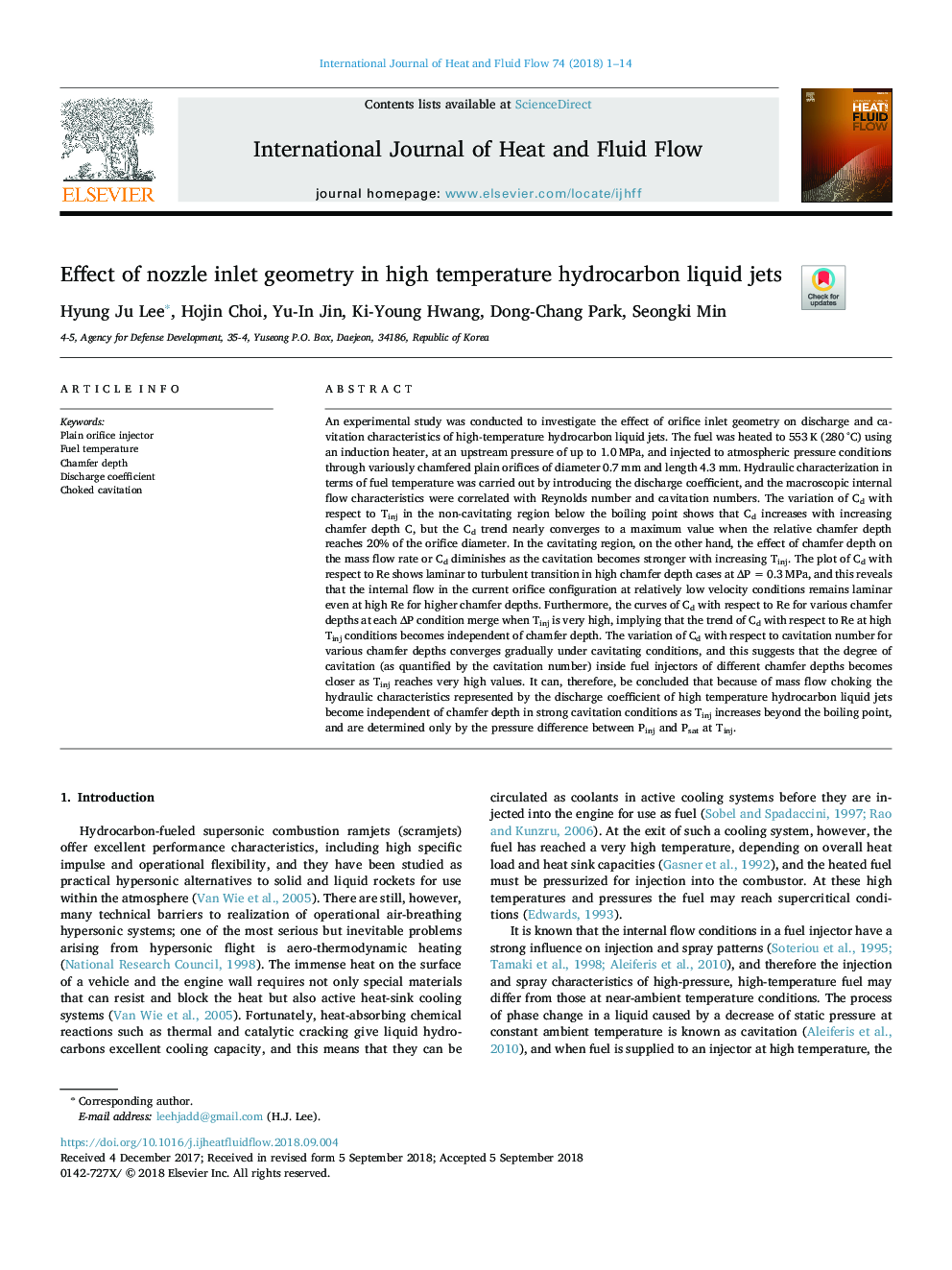| کد مقاله | کد نشریه | سال انتشار | مقاله انگلیسی | نسخه تمام متن |
|---|---|---|---|---|
| 10226141 | 1701252 | 2018 | 14 صفحه PDF | دانلود رایگان |
عنوان انگلیسی مقاله ISI
Effect of nozzle inlet geometry in high temperature hydrocarbon liquid jets
ترجمه فارسی عنوان
اثر هندسه ورودی نازل در جت های مایع مایع هیدروکربن با درجه حرارت بالا
دانلود مقاله + سفارش ترجمه
دانلود مقاله ISI انگلیسی
رایگان برای ایرانیان
کلمات کلیدی
انژکتور سوراخ دشت، دمای سوخت، عمق چمبر ضریب تخلیه، حفره حفره
موضوعات مرتبط
مهندسی و علوم پایه
مهندسی شیمی
جریان سیال و فرایندهای انتقال
چکیده انگلیسی
An experimental study was conducted to investigate the effect of orifice inlet geometry on discharge and cavitation characteristics of high-temperature hydrocarbon liquid jets. The fuel was heated to 553â¯K (280â¯Â°C) using an induction heater, at an upstream pressure of up to 1.0â¯MPa, and injected to atmospheric pressure conditions through variously chamfered plain orifices of diameter 0.7â¯mm and length 4.3â¯mm. Hydraulic characterization in terms of fuel temperature was carried out by introducing the discharge coefficient, and the macroscopic internal flow characteristics were correlated with Reynolds number and cavitation numbers. The variation of Cd with respect to Tinj in the non-cavitating region below the boiling point shows that Cd increases with increasing chamfer depth C, but the Cd trend nearly converges to a maximum value when the relative chamfer depth reaches 20% of the orifice diameter. In the cavitating region, on the other hand, the effect of chamfer depth on the mass flow rate or Cd diminishes as the cavitation becomes stronger with increasing Tinj. The plot of Cd with respect to Re shows laminar to turbulent transition in high chamfer depth cases at ÎPâ¯=â¯0.3â¯MPa, and this reveals that the internal flow in the current orifice configuration at relatively low velocity conditions remains laminar even at high Re for higher chamfer depths. Furthermore, the curves of Cd with respect to Re for various chamfer depths at each ÎP condition merge when Tinj is very high, implying that the trend of Cd with respect to Re at high Tinj conditions becomes independent of chamfer depth. The variation of Cd with respect to cavitation number for various chamfer depths converges gradually under cavitating conditions, and this suggests that the degree of cavitation (as quantified by the cavitation number) inside fuel injectors of different chamfer depths becomes closer as Tinj reaches very high values. It can, therefore, be concluded that because of mass flow choking the hydraulic characteristics represented by the discharge coefficient of high temperature hydrocarbon liquid jets become independent of chamfer depth in strong cavitation conditions as Tinj increases beyond the boiling point, and are determined only by the pressure difference between Pinj and Psat at Tinj.
ناشر
Database: Elsevier - ScienceDirect (ساینس دایرکت)
Journal: International Journal of Heat and Fluid Flow - Volume 74, December 2018, Pages 1-14
Journal: International Journal of Heat and Fluid Flow - Volume 74, December 2018, Pages 1-14
نویسندگان
Hyung Ju Lee, Hojin Choi, Yu-In Jin, Ki-Young Hwang, Dong-Chang Park, Seongki Min,
